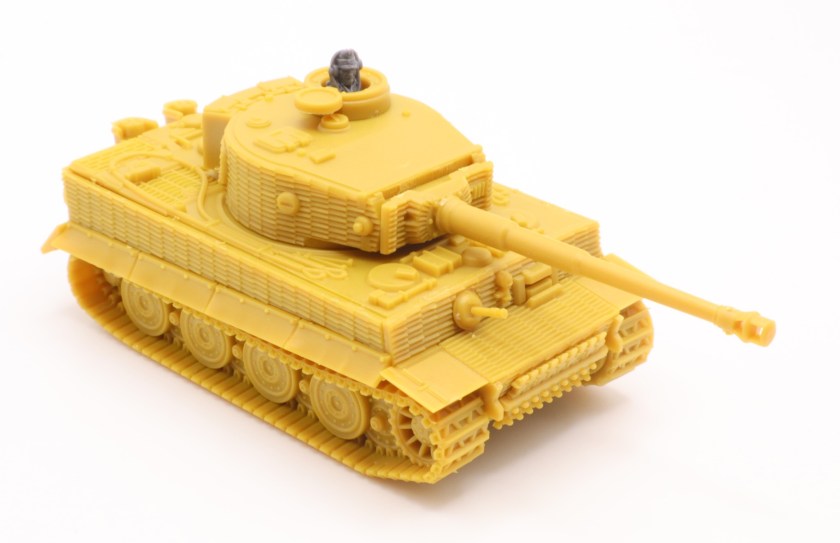One of the Clash of Steel Starter Sets have been on my wants list ever since I found out about them. I have the Operation Unthinkable boxed set containing the British and German tanks.
Operation Unthinkable was the name given to two related possible future war plans developed by the British Chiefs of Staff Committee against the Soviet Union during 1945.
In the box, as well as the rules, counters, and dice, are seventeen tanks, two of which are Tiger tanks. I had already constructed and undercoated the two Tiger tanks.
Having given the tanks a white undercoat, I then used a brown spray to basecoat the underneath of the models.
The aim of this spray is to add shadow to the model rather than using the same paint across the whole of the model.
The next step was a coat of Army Painter Desert Yellow Spray.
The next stage will be brush painting the camouflage.
























































